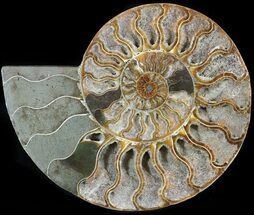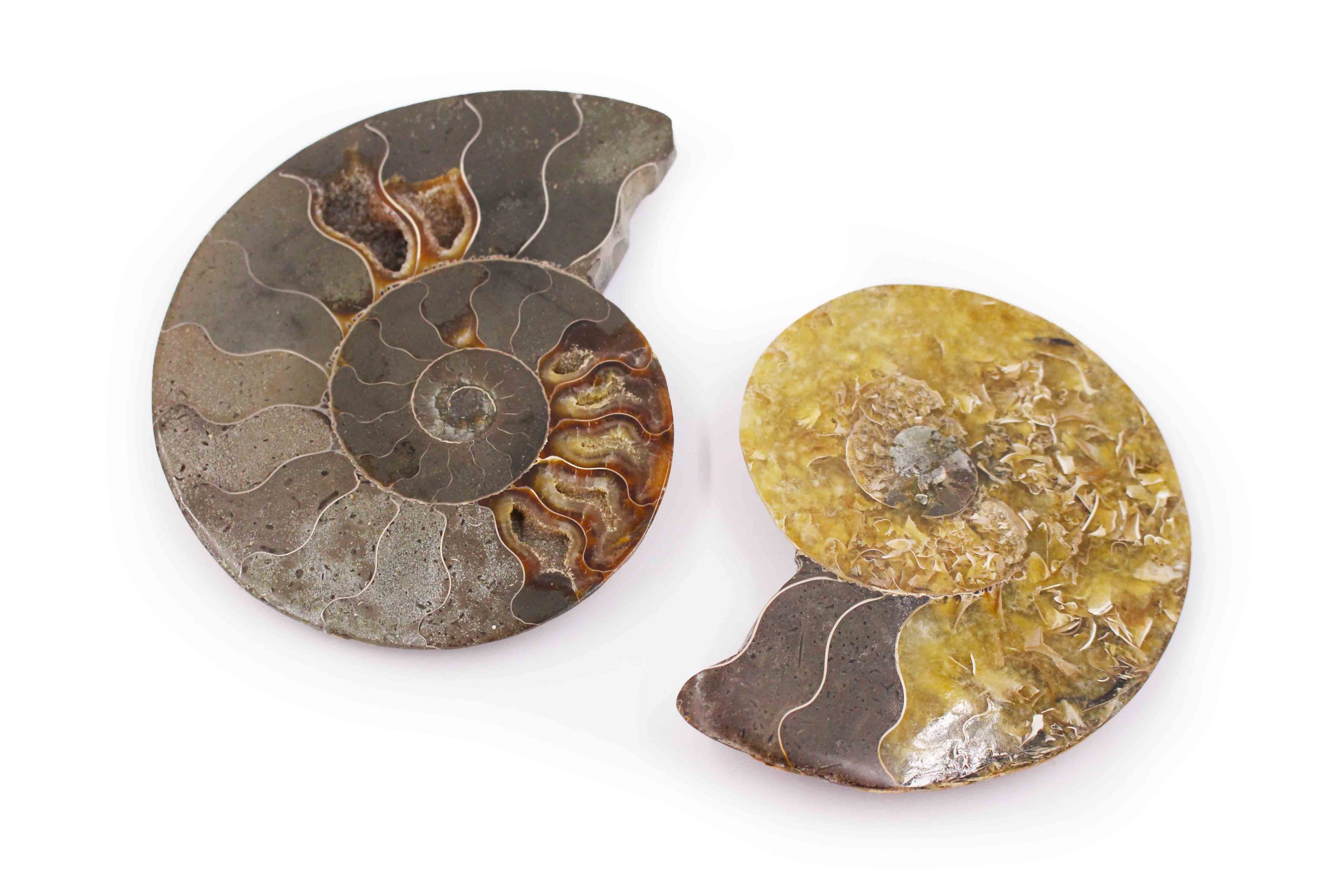
Males were believed to be only about half the size of females. The shells could reach up to 6.5 feet (2 meters) in length. The genus Baculites included many species of straight-shelled ammonites, which only displayed a coiled form as juveniles. Many ammonite shells have knobs, spines, tubercles, or ribs, which may have helped in defense from predators. In addition to the typical coiled shape, ammonites in the heteromorph group could be straight like a tusk, or helically coiled, or even shaped like a compressed paper clip. There was an amazing diversity in the variety of shapes and ornamentation of ammonites. The smallest ammonite species had shells less than an inch in size, but the larger, coiled species were huge-some reached more than 9 feet (3 meters) in diameter! As a counterbalance, some of the chambers had calcareous deposits acting as ballast. As the animal grew, the old chambers could be filled with gas or liquid, in order to regulate the animal's buoyancy in the water, much like buoyancy tanks in a submarine. The animal lived in the outermost chamber of the shell. These walls left distinct suture lines where they joined with the outer shell, making patterns that are important in ammonite classification. The shells of ammonites were divided into chambers by intricately folded walls or septae. Although we lack fossilized soft parts for ammonites, we assume their bodies were similar to those of the chambered Nautilus. The Nautilus has a fleshy head equipped with a beak and very well-developed eyes, clustered in the middle of tentacles used for catching prey. Pachydiscus caterinae is a large species of coiled ammonite, with shells measuring up to 3 feet (1 meter) in diameter.Īmmonites were free-swimming mollusks that had external shells that were either straight or coiled. Related to the living chambered Nautilus, ammonites are extinct members of the group of marine animals called cephalopods, which include such other living species as squid, cuttlefish, and octopi. Also from Salsipeudes and Santa Catarina, Mexico. This Gorgeous Large Ammonite displays excellent iridescence and measures 3.5 x 2.8 x 1.4 inches.Ammonites were probably found in all depths of the ancient oceans.Ĭarlsbad, La Jolla, and Point Loma, in California. The Ammonite is also often recommended to put in the home to attract health, prosperity and success.

Ammonites are often used for activating Kundalini and life path energies. Ammonites have absorbed cosmic energy over eons of time and help to stimulate the life force (Chi) within.

Its spiral shape symbolizes continual change and evolution.

The Ammonite is a very powerful earth healing fossil. Metaphysical & Healing properties of Ammonites: The ratio itself represents the transcendence of numbers through form. The description of this golden proportion as the Divine proportion is perhaps fitting because it is seen by many as a door to a deeper understanding of beauty and spirituality in life, unveiling a hidden harmony or connectedness in so much of what we see. Also known as the Golden Mean or Golden Proportion, its ubiquity and astounding functionality in nature suggests its importance as a fundamental characteristic and building block of the Universe. The famous Fibonacci sequence has captivated mathematicians, artists, designers, and scientists for centuries. The Ammonite and subsequently the Nautilus are natural formations of the Golden Ratio in action. These iridescent Ammonites are often of gem quality when polished. "Ammolites" are Ammonite fossils found in Madagascar, that display iridescence by compression and mineralization of the Ammonite fossil.

Scientists use the various shapes and sizes of ammonite shells that appeared and disappeared through the ages to date other fossils. The earliest ammonites appear during the Devonian period, and the last species died out during the CretaceousPaleogene extinction event. Ammonites were prolific breeders, lived in schools, and are among the most abundant fossils found today. Ammonites belong to a group of predators known as cephalopods, which includes their living relatives the octopus, squid, cuttlefish and nautilus. The name 'ammonite' originates from the Greek Ram-horned god called Ammon. These creatures lived in the seas between 240 - 65 million years ago, when they became extinct along with the dinosaurs. This incredible piece is covered in dazzling rainbows! Much more flashy in person than the photos picked up! It is amazing to think that this beautiful Fossilized Ammonite Shell was once a part of an Ancient living being roaming the Earth's Ancient Seas more than 65 Million Years ago! Wow!Īmmonites are perhaps the most widely known fossil, possessing the typically ribbed spiral-formed shell classic of the Nautilus.


 0 kommentar(er)
0 kommentar(er)
